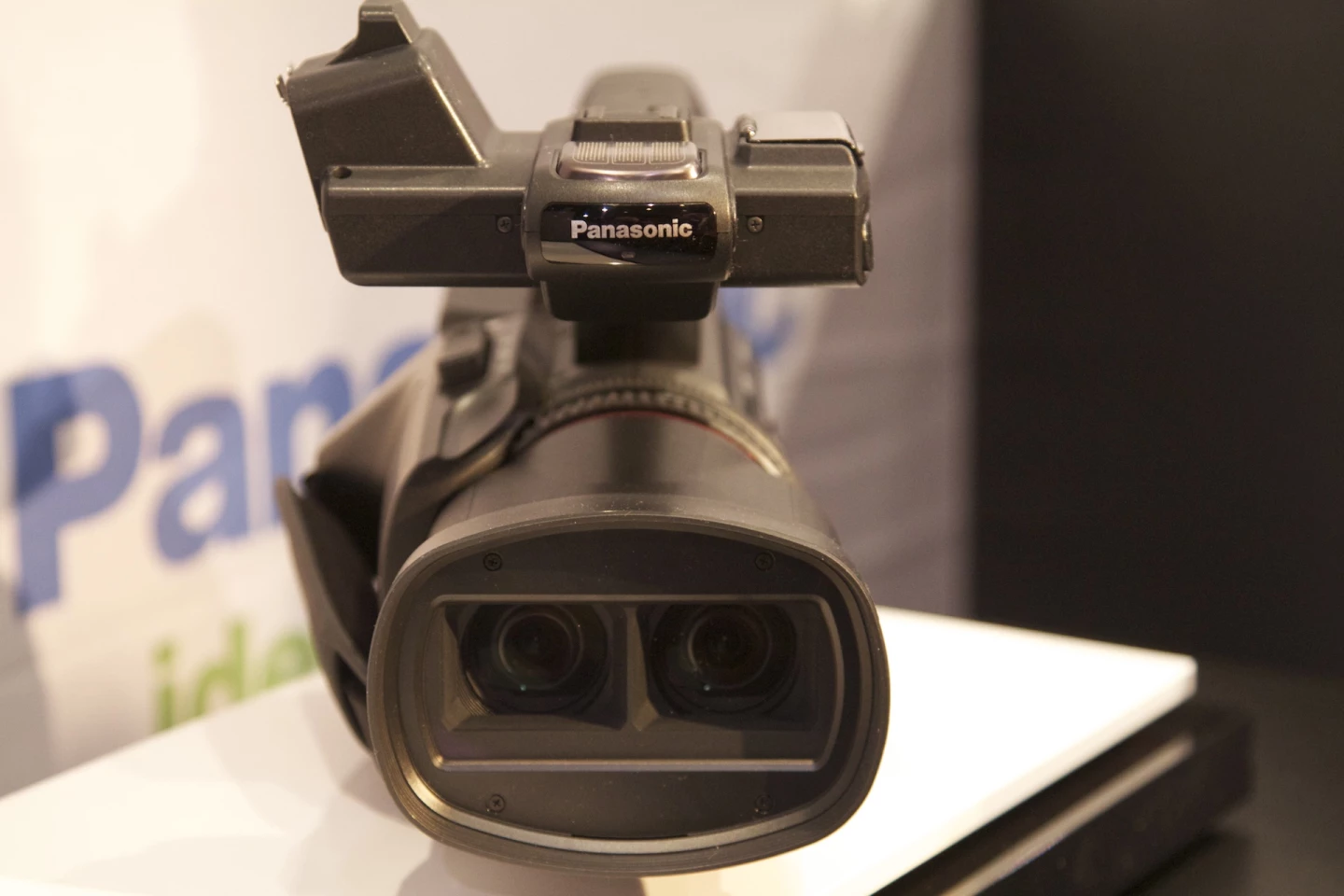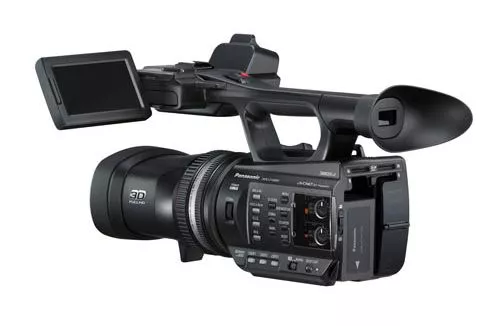Panasonic has now priced its new twin-lens 2D/3D camcorder - the HDC-Z10000, which is said to achieve the industry's nearest close-up for a twin-lens 3D camcorder of approximately 17.7 inches (45 cm). The CES Innovations 2012 Design and Engineering Awards Honoree features the company's unique Double 3MOS System for color and detail reproduction, has a high resolution electronic viewfinder and an LCD panel which cater for glasses-free 3D viewing, and is Dolby Digital 5.1-channel surround sound-capable.
Panasonic was the first to break out a consumer-level 3D camcorder back in July 2010, with the HDC-SDT750. Other manufacturers soon followed suit - such as JVC with its twin sensor GS-TD1 with 5x optical zoom F1.2 lenses, and Sony with the high-spec, low-price HDR-TD10 3D HD camcorder. Sony even managed to squeeze full HD 3D movie capabilities into a version of its pocket-sized Bloggie model.
Panasonic has now bounced back into the fray with the HDC-Z10000 twin lens 2D/3D compact handheld camcorder, which was originally announced last August. Its the company's first integrated twin-lens 2D/3D camcorder that's fully compatible with the AVCHD 3D/Progressive standard. The new standard uses MVC (Multiview Video Coding) to record and play 3D images via the Frame Sequential Method, with each frame being at full resolution, which runs up to full 1080p HD (60i in 3D and 60p in 2D).

The camcorder features two large-diameter, nano-surface-coated F1.5 lenses, each throwing an image onto its own 1/4.1-inch 3MOS sensor, and is capable of capturing 3D images from a wide-angle 32mm equivalent (29.8mm for 2D) up to 10x optical zoom (12x for 2D shooting, or 23x for shooting with Intelligent Zoom). Precision focus, zoom and iris adjustment are catered for by three independent manual rings, and there's a dedicated dial for fine adjustment of 3D convergence.
The 5.7 x 7.68 x 13.8-inch (145 x 195 x 350-mm), 3.53 pound (1600 g) Z10000 has been treated to a newly-developed Crystal Engine Pro II high-speed processing engine, and benefits from a POWER OIS (optical image stabilization) system that's said to completely suppress annoying, movie-spoiling hand shake when shooting in 3D mode. It's quick off the mark too - having both quick start (0.6 seconds) and quick power-on (2 seconds) functionality.
There's a 0.45-inch (11.43 mm), 1,226,880-dot Live View electronic viewfinder, which overlays important image information to allow for fine tuning of such things as gamma mode, knee point, detail coring, and chroma levels. The camcorder also has a 1,152,000-dot, 3.5-inch LCD display that uses a parallax barrier to create a 3D effect without the need for special glasses. Monitor-free, real-time 3D image checking is also possible using the Mix Overlay mode, where focus can be achieved using the left eye only.

As you might expect from a Panasonic system, the Z10000 comes with Intelligent Auto that automatically chooses optimum settings for different conditions. Other functions of interest include time lapse recording and still picture capture at up to 7.08 megapixels. Frequently used function buttons are arranged on the side of the camera body for ease of use, but users can custom assign frequently used functions to three user buttons on the main unit and four more on the LCD display.
The camcorder's audio track can be recorded via the built-in, 2-channel, stereo microphones or via two XLR audio inputs with a 48-V phantom power supply for external microphones, and there's support for uncompressed Linear PCM (2-channel) audio, too.
The Z10000 also has dual SD/SDHC/SDXC card slots that can be used for either relay or back-up recording, a built-in speaker, a 3.5mm headphone jack, HDMI port, and runs on an included 7.2V/5,400 mAh rechargeable battery.
Panasonic's HDC-Z10000 is available now for a suggested list price of US$3,500.

















